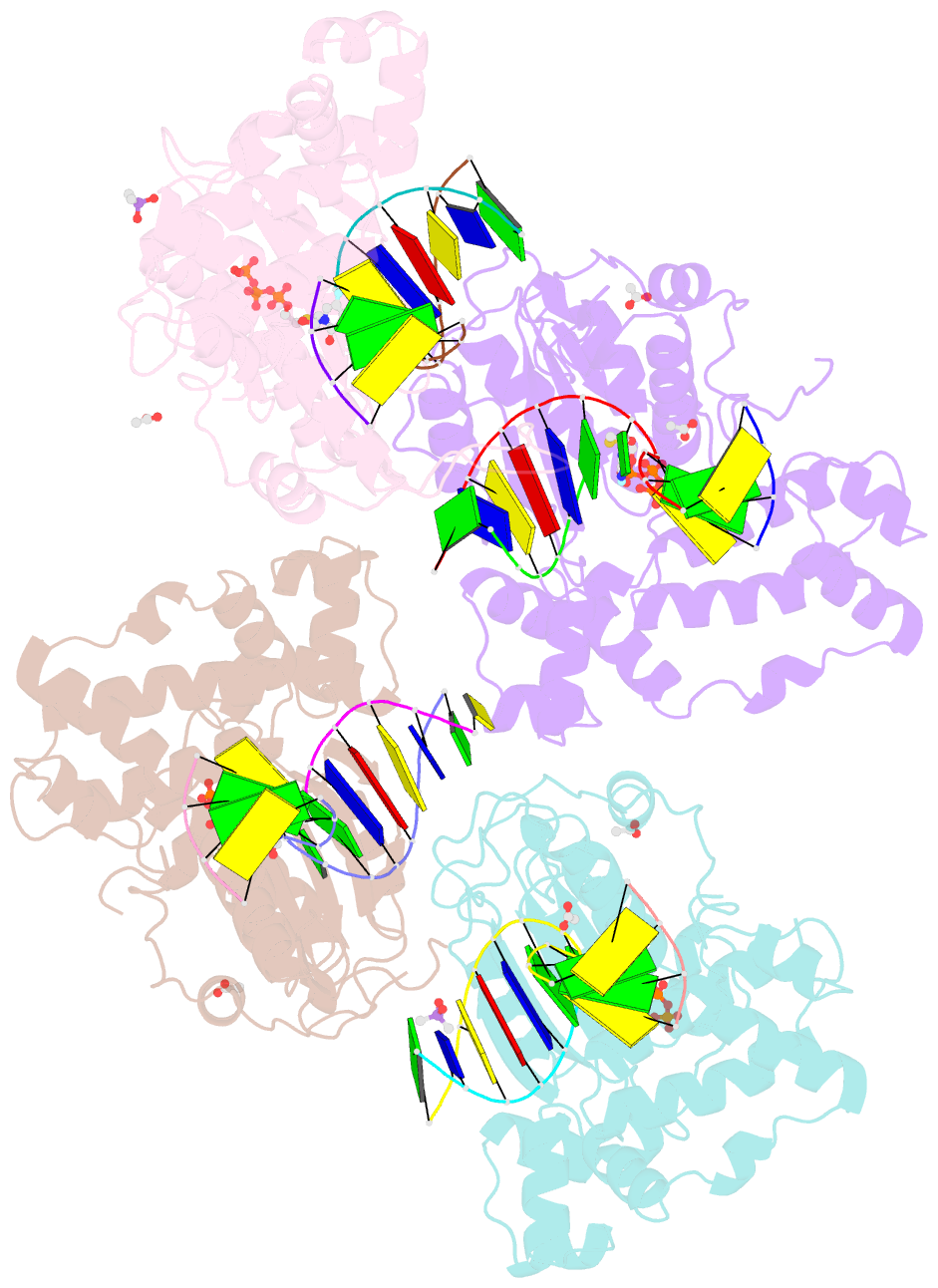Summary information and primary citation
- PDB-id
- 4k4i; SNAP-derived features in text and JSON formats;
DNAproDB
- Class
- transferase-DNA
- Method
- X-ray (2.25 Å)
- Summary
- Ternary crystal structures of a human DNA polymerase lambda in complex with DNA and (-)ftc-tp.
- Reference
- Vyas R, Zahurancik WJ, Suo Z (2014): "Structural basis for the binding and incorporation of nucleotide analogs with L-stereochemistry by human DNA polymerase lambda." Proc.Natl.Acad.Sci.USA, 111, E3033-E3042. doi: 10.1073/pnas.1401286111.
- Abstract
- Although lamivudine and emtricitabine, two L-deoxycytidine analogs, have been widely used as antiviral drugs for years, a structural basis for D-stereoselectivity against L-dNTPs, enantiomers of natural nucleotides (D-dNTPs), by any DNA polymerase or reverse transcriptase has not been established due to lack of a ternary structure of a polymerase, DNA, and an incoming L-dNTP. Here, we report 2.10-2.25 Å ternary crystal structures of human DNA polymerase λ, DNA, and L-deoxycytidine 5'-triphosphate (L-dCTP), or the triphosphates of lamivudine ((-)3TC-TP) and emtricitabine ((-)FTC-TP) with four ternary complexes per asymmetric unit. The structures of these 12 ternary complexes reveal that relative to D-deoxycytidine 5'-triphosphate (D-dCTP) in the canonical ternary structure of Polλ-DNA-D-dCTP, L-dCTP, (-)3TC-TP, and (-)FTC-TP all have their ribose rotated by 180°. Among the four ternary complexes with a specific L-nucleotide, two are similar and show that the L-nucleotide forms three Watson-Crick hydrogen bonds with the templating nucleotide dG and adopts a chair-like triphosphate conformation. In the remaining two similar ternary complexes, the L-nucleotide surprisingly interacts with the side chain of a conserved active site residue R517 through one or two hydrogen bonds, whereas the templating dG is anchored by a hydrogen bond with the side chain of a semiconserved residue Y505. Furthermore, the triphosphate of the L-nucleotide adopts an unprecedented N-shaped conformation. Our mutagenic and kinetic studies further demonstrate that the side chain of R517 is critical for the formation of the abovementioned four complexes along proposed catalytic pathways for L-nucleotide incorporation and provide the structural basis for the D-stereoselectivity of a DNA polymerase.





